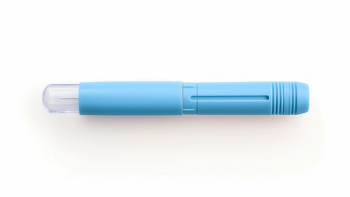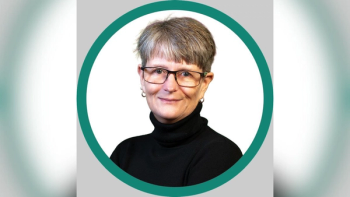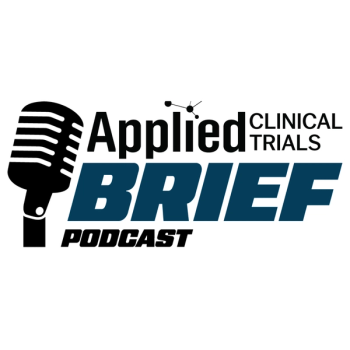
Sarclisa Combination Produces Significantly Improved Progression-Free Survival in Newly Diagnosed Multiple Myeloma
Induction therapy comprised of Sarclisa (isatuximab-irfc; Sanofi) plus lenalidomide, bortezomib, and dexamethasone significantly improved progression-free survival from first randomization in transplant-eligible patients with newly diagnosed multiple myeloma.
The results of a Phase III trial show that the combination of Sarclisa (isatuximab-irfc; Sanofi) plus lenalidomide, bortezomib, and dexamethasone (RVd) as induction therapy significantly improved progression-free survival (PFS) from first randomization in transplant-eligible patients with newly diagnosed multiple myeloma (NDMM). Patients in the German-speaking Myeloma Multicenter Group (GMMG)-HD7 trial experienced a statistically significant and clinically meaningful decrease in disease progression or death vs. RVd induction, regardless of the maintenance treatment regimen, according to the study.1
“Successful induction therapy is one of the most critical components to reduce the relapse or recurrence risk in patients with newly diagnosed multiple myeloma,” principal investigator Hartmut Goldschmidt, MD, president of GMMG, professor of Medicine at the Heidelberg University Hospital, Germany, said in a press release. “While we observed this investigational combination showed improved minimal residual disease negativity rates in the bone marrow, indicating potentially deeper responses after induction, further follow-up was needed to better understand how this translated to long-term outcomes. These data provide evidence that the Isa-RVd regimen potentially improves [PFS] in the frontline, transplant-eligible population and supports the potential of this quadruplet to become a new standard-of-care induction regimen in this treatment setting.”1
In May 2024, the FDA granted Priority Review to a supplemental Biologics License Application for Sarclisa combined with RVd to treat transplant-ineligible patients with NDMM.2 Sarclisa is a targeted monoclonal antibody with two previous approvals for patients with relapsed and refractory multiple myeloma.3,4 If the FDA approves Sarclisa for this indication, the drug would become the first anti-CD38 therapy indicated in combination with RVd for newly diagnosed patients who are ineligible for a transplant.
There are currently six Phase III trials, including GMMG-HD7, that have shown positive findings with Sarclisa in the treatment of patients with multiple myeloma, including positive data from four trials evaluating a Sarclisa-based quadruplet in the frontline setting. Findings from the Phase III IMROZ trial show the Sarclisa combination achieved a statistically significant improvement in PFS compared with RVd alone in transplant-ineligible patients with NDMM.5 IMROZ was the fourth Phase III trial of Sarclisa combinations in patients with NDMM that showed superiority compared with standard of care, which bolsters its potential as a best-in-class therapy, according to Sanofi.
The pivotal, randomized, open-label, multicenter, two-part GMMG-HD7 trial analzyed Sarclisa with RVd compared with RVd induction followed by post-transplant re-randomization to Sarclisa plus lenalidomide compared with lenalidomide maintenance in transplant-eligible NDMM patients. A total of 662 patients with transplant-eligible NDMM were enrolled across 67 sites in Germany.
In the first part, patients in both cohort were randomly assigned in an equal ratio to receive three 42-day cycles of RVd, with one cohort receiving Sarclisa. In the second part of the study, investigators re-randomized patients post-transplant to receive Sarclisa plus lenalidomide or maintenance therapy with lenalidomide alone. Patients received Sarclisa via intravenous infusion at a dose of 10 mg/kg once weekly for the first four weeks of cycle one, followed by every other week dosing for the rest of the induction period.
Full results from the trial will be presented at an upcoming medical meeting.
“The GMMG-HD7 study was designed to better understand the distinct effect of targeting CD38 with Sarclisa in induction versus maintenance treatment of transplant-eligible patients,” Dietmar Berger, MD, PhD, chief medical officer and global head of development at Sanofi, said in the release. “These data build upon our belief that Sarclisa has the potential to be a best-in-class CD38 therapy that could improve long-term outcomes versus the standard-of-care for certain patients. We look forward to the full data presentation and continuing our mission of helping make a meaningful difference for people living with multiple myeloma.”1
References
1. Sarclisa induction treatment demonstrated significantly improved progression-free survival in patients with newly diagnosed multiple myeloma eligible for transplant. News release. Sanofi. August 8, 2024. Accessed August 9, 2024.
2. Sarclisa accepted for FDA priority review for the treatment of transplant-ineligible newly diagnosed multiple myeloma. News release. Sanofi. May 27, 2024. Accessed August 9, 2024.
3. FDA approves Sarclisa (isatuximab-irfc) for patients with relapsed multiple myeloma. News release. Sanofi-aventis U.S. LLC. March 2, 2020. Accessed August 9, 2024.
4. Understanding SARCLISA. International Myeloma Foundation. Published June 2020. Accessed August 9, 2024.
5. Sarclisa® (isatuximab) Phase 3 trial met primary endpoint of progression free survival in patients with newly diagnosed multiple myeloma not eligible for transplant. News release. Sanofi. December 7, 2023. Accessed August 9, 2024.
Newsletter
Stay current in clinical research with Applied Clinical Trials, providing expert insights, regulatory updates, and practical strategies for successful clinical trial design and execution.






.png)



.png)



.png)
.png)
